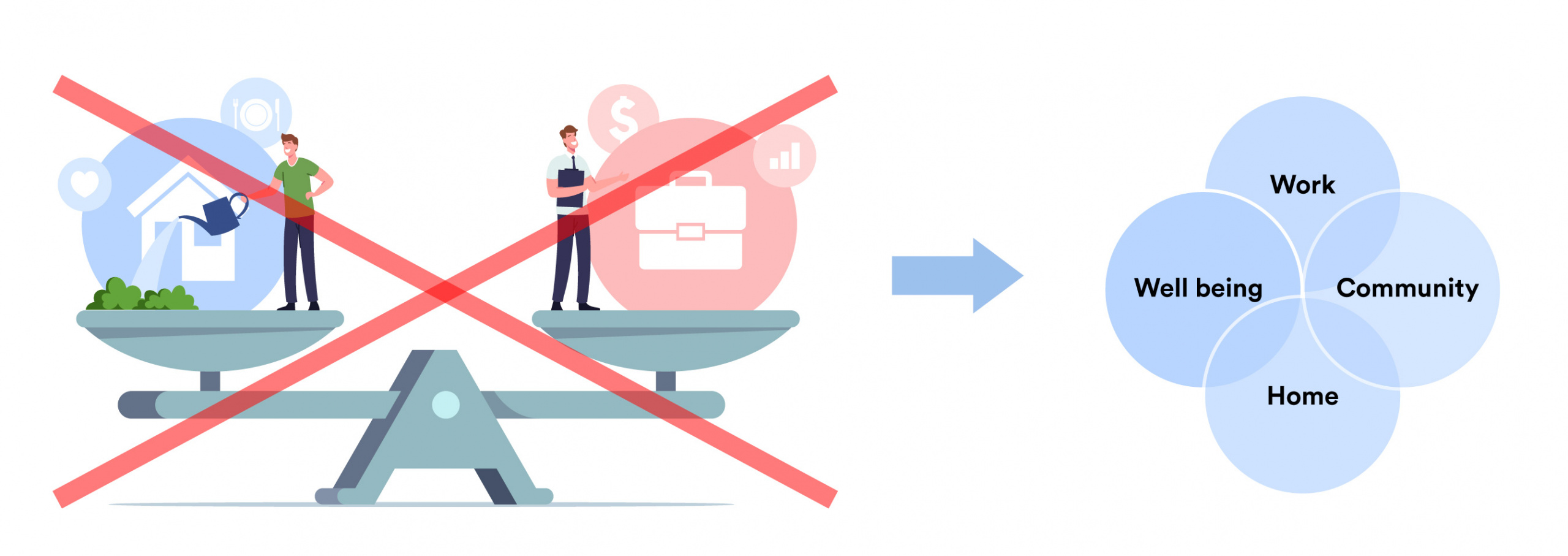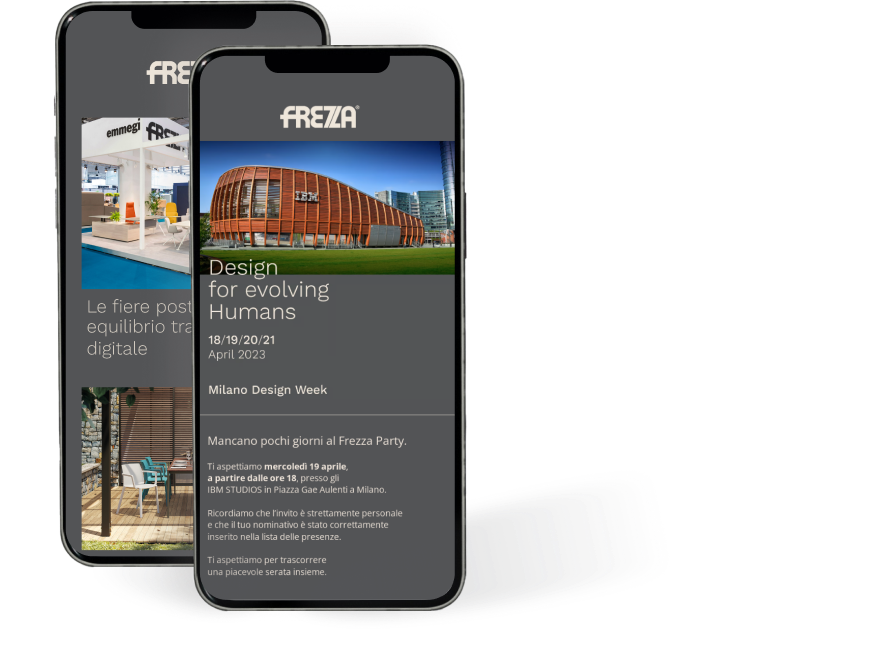Synergy. Work, home, family, community, leisure, hobbies: each area of our life contributes to our personal well-being and is an important part of our personality.
Why, then, do we talk about work-life balance? These are not two opposing spheres, but experiential realities that have to be integrated into everyone’s daily life.
This concept is the foundation of the Berkley Haas School of Business’s idea of work-life integration, which is increasingly making its way into work cultures all over the world.

Fonte: Berkeley Haas. Vector: goonerua
The approach differences
What are the differences between work-life balance and work-life integration?
The first one (‘balance’) means finding a balance between time devoted to work and time devoted to private life, with the aim of not sacrificing anything. This is a school of thought that arose in the 1970s and 1980s to counteract the stress that young baby boomers were subjected to at work due to overtime, weekend calls or tight deadlines.
In short: finding a boundary between the (office) work and private sphere.
In recent years this dividing line has become blurred due to the increasing amount of remote working, the ability to be always connected (even with colleagues) and the higher agile working demand, especially by the younger generations.
This is where work-life integration comes in, defined by the Berkley Haas School of Business as “an approach that creates greater synergies between all areas that define life: work, home/family, community, personal well-being and health”.
Integrating work and private life means acting holistically, deciding when to do what in complete freedom without losing sight of personal and business goals.
With this approach, the separation of home and office is replaced by work flexibility and empowerment of the individual.
How to transition from work-life balance to work-life integration
Each case is unique, but there are some guidelines that can help in this transition.
- Work-life integration isn’t for everyone
It sounds limiting, but it’s reality. Some tasks cannot be performed at home or at times other than those required by the contract, due to their specificity. - It’s necessary to ‘study’ employees
What are the real needs of employees? There are those who would prefer to activate hybrid work, those who would like to have a company canteen and those who would need a babysitting service. The possibilities are countless and only by means of an internal survey is it possible to highlight them in order to define priorities. - SMART goals are needed
When work doesn’t have a defined timetable, it’s necessary to set Specific, Measurable, Accepted, Realistic, Timely It will be the person’s responsability to achieve them, focusing on productivity and not on working hours. - Trust between people is crucial
Team members (and the company as a whole) must trust each other to avoid conflicts or recriminations. You’ll find some tips on this issue in the following article.
Applying the principles of work-life integration is an action geared towards increasing long-term competitiveness. Happy workers are always the most productive ones!

